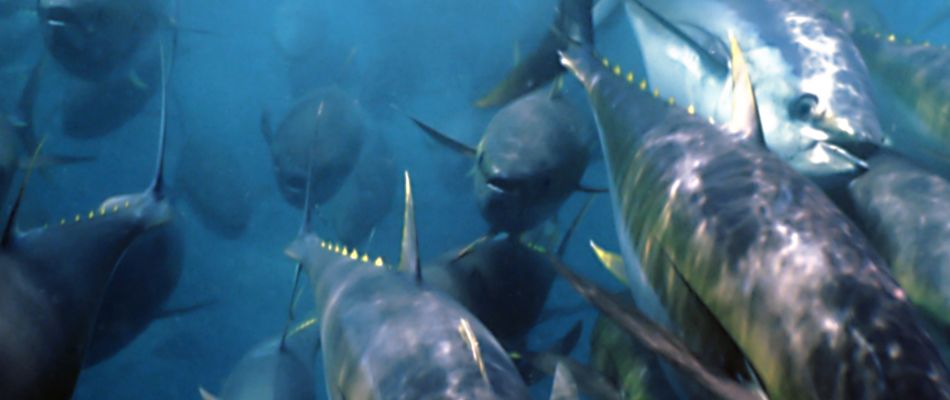
What Do Changes to Tuna Ratings on the IUCN List Really Indicate?
News of Improved Ratings for Some Tuna Stocks Offers an Opportune Moment to Consider the Metrics that Support Fisheries Management
In the days since the International Union for Conservation of Nature (IUCN) released its updated Red List of Threatened Species™, many colleagues have contacted ISSF to celebrate IUCN’s news that four tuna species were no longer classified as endangered (see details below).
IUCN attributed the progress to countries enforcing sustainable fishing quotas and successfully combating illegal fishing, which are essential for protecting in-demand fish stocks and the marine ecosystem. In noting any improvements in tuna stock health, sustainable fishing stakeholders also should acknowledge tuna Regional Fisheries Management Organization (RFMO) successes in implementing needed fisheries management measures.
As a coauthor of the tuna portion of the IUCN assessment updates, I welcome attention to the urgency regarding tuna stock sustainability, and I join in the celebration of hard-won gains in tuna conservation. But there is more to the story.
To appreciate why, it’s important to understand how the IUCN Red List methodology compares to other tuna assessment criteria. An explanation I offered 10 years ago, when I was a co-author of IUCN’s first tuna ratings, is still relevant today, so I will summarize it here.
IUCN has rated tuna species twice to date, and those assessments were 10 years apart.
“Rate of Decline Criterion”
First, the primary indicator that IUCN relies on to classify fish species is the “rate of declining criterion.” The rate assesses the abundance of mature individual fish and how much they’ve declined over a period of time relative to the age at which they reach maturity.
If during this period (between 5-20 years for tunas) the mature population has declined by at least 50%, it is classified as Vulnerable. If the decline is 70-89%, it is classified as Endangered. If the decline is 90% or more, it is classified as Critically Endangered.
Although this is a consistent formula, when IUCN lists a fish as “Threatened,” it does not necessarily equate to the species being in immediate danger of extinction or collapse. It means only that there has been a drop in population size that meets the IUCN criteria for that particular classification.
Classifications vs. Real World Fisheries Management
Second, while the IUCN classifications are no doubt useful, they do not always align with criteria for what is considered successful fisheries management. In addition, IUCN assessments are done at the global, species level, while RFMO assessments are done at the stock-region level.
Several factors must be considered in making, or weighing, any evaluation of a stock’s health.
Tuna species are actually at their most productive when they are at 25-40% of their maximum population size, the population that supports maximum sustainable yield, which is RFMOs’ main population management objective.
So that means a 50% drop in tuna population may receive a somewhat alarmist classification by IUCN standards, but it is actually quite reasonable from a fisheries management standpoint.
Overfished or Threatened?
Consider a scenario in which a fish population has been heavily overfished and has remained severely low — but stable — for decades.
In that case, IUCN would not detect a major drop in abundance based on the IUCN “rate of decline” criterion, and would classify the species as “Least Concern” — or, in other words, not threatened. This classification, however, would be contrary to what fisheries management norms would consider it to be: a failure to ensure that stock’s sustainability.
Recent Red List Report Changes
In the 2021 Red List update, IUCN reassessed the seven most commercially fished tuna species and found four to have shown signs of recovery:
- The Atlantic bluefin tuna (Thunnus thynnus) moved from Endangered to Least Concern.
- The Southern bluefin tuna (Thunnus maccoyii) moved from Critically Endangered to Endangered.
- The albacore (Thunnus alalunga) and yellowfin tunas (Thunnus albacares) both moved from Near Threatened to Least Concern.
Alternately, ISSF uses tuna RFMO stock assessments to evaluate stock status. For these four species, the data show the two stocks of Atlantic bluefin with an intermediate stock abundance status, Southern Bluefin with an intermediate stock abundance status, five Albacore stocks with a healthy stock abundance status and one at an intermediate level, and three yellowfin stocks at a healthy level and one depleted (Indian Ocean yellowfin). Intermediate stock abundance refers to a spawning biomass that is below maximum sustainable yield levels but otherwise stable, increasing, or fluctuating, and with corrective actions in place.
As one strong example of divergence, our ISSF assessment shows that Indian Ocean yellowfin is overfished and in need of stronger management, contrary to IUCN’s “Least Concern” classification for yellowfin tuna globally, at a species level.
Detailed Stock Assessments Ensure Better Stock Management
In conclusion, the Red List, while undeniably useful, does not replace the need for RFMOs’ own stock assessments and related management efforts. Routine, detailed stock assessments yield essential data to be incorporated into scientific advice to guide the development of informed stock-specific management measures. In turn, these targeted management measures can reduce fishing mortality, which improves stock abundance over time.
For the four stocks in this latest Red List spotlight, IUCN’s “once in a decade” and “one-size-fits-all” stock ratings methodology happens to generally align with tuna RFMOs’ stock status assessments, which are a testament to effective science and management efforts.
But to optimally safeguard tuna populations, it is necessary to dive deeper — to tailor and adopt management measures for each stock based on its unique status and regional circumstances. RFMOs will most certainly need to keep at this work, year in and year out.


